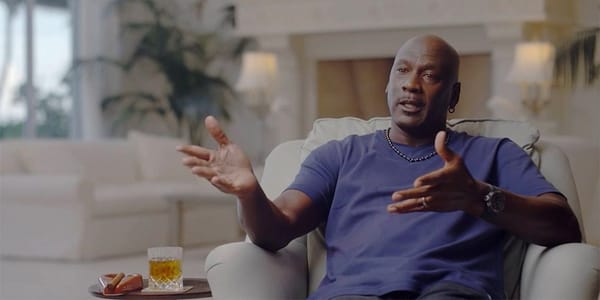Searching for lost forms

A Croatian animated film reminds us of some of the things cinema can and routinely used to do
When was the last time a striking visual composition quietly broke your mind, suggested new horizons, new images, new forms? For me, it was just yesterday — watching a film made 71 years ago. Early in Anthony Mann’s Winchester ‘73 (1950), the film suddenly breaks off from its usual medium-to-long shot model to cut to a close up on James Stewart, crazy eyed, almost bursting with rage, and closer to the camera and to the viewer than ever before in the film. My jaw was on the floor.
It isn’t a stretch to say that most commercial films made today have absolutely no visual strategy of this kind, beyond following the basic 180 degree rule if we’re lucky. Even when limiting our search to merely interesting compositions a la One Perfect Shot, few big directors appear to bother (one that comes to mind is Denis Villeneuve and his Dune). For real formal inventiveness, a naturally safer bet is to turn to experimental cinema, where narrative and the delivery of information tend to take a backseat to visual creation.
In his extravagantly titled feature debut Accidental Luxuriance of the Translucent Watery Rebus, Croatian director Dalibor Baric puts together images from other sources manipulated by him often to the point of abstraction, edited together in quick succession without any conventional logic to their order, and accompanied by a voiceover of non sequiturs and a chaotic soundscape. You’d think it would be a hellish experience, but it isn’t. My first instinct as a viewer was to simply let the chaos wash over me, my eyes glazing over, abandoning all hope of getting any grasp on the film at all. But this proved impossible. There was no way to watch this torrent of images of all kinds without trying to make something of them in my mind because far from random, they all seemed to have been chosen for their immediately striking power.
Taken from film noir, melodramas, generally old films and photography as well as advertising, the film’s images and clips are full of faceless characters wearing trench coats and suits, which are immediately evocative of mystery, secrets, conspiracy and danger. Sure enough, from them soon emerges in bits and pieces a loose narrative of oppressive political power, doomed love, covert resistance and a general atmosphere of mistrust. But this isn’t what I mean when I talk about making something out of those images.
Rather than the narrative or symbolic meaning that eventually coalesced around those visuals, what kept drawing me into the film was the same formal inventiveness that I encountered in Anthony Mann’s Western. Following one another too fast for them to suggest any meaning or narrative deeper than “trenchcoat = mystery” or “suit = conformity,” those images seemed purposefully cut short so as to be read and understood only on a purely formal level — as plays of shadow and light, shapes and perspectives, angles but also colour.
Although painted over and extremely brief, I instantly recognised in the film shots from All That Heaven Allows, which says something not so much about me as it does about what a certain kind of bygone filmmaking could do. Taken from the scene where Jane Wyman’s Cary Scott and Rock Hudson’s Ron Kirby are standing by the large icy windows in her sitting room, the shot has an ominous, unforgettable quality — for the discrepancy in the lovers’ heights; for the fact that they are standing unnervingly close to a window so large it would surely divulge all of their secrets; for the way they remain obscured in darkness while in front of a bright and spotless expanse of white snow. A commonplace scene, two characters in a room, is suddenly made vertiginous. In the most counterintuitive and surprising way imaginable, Baric appears to have found a way to reveal, capture and restore some of the immediately exciting formal power of the frames, movements and editing of bygone film traditions.




